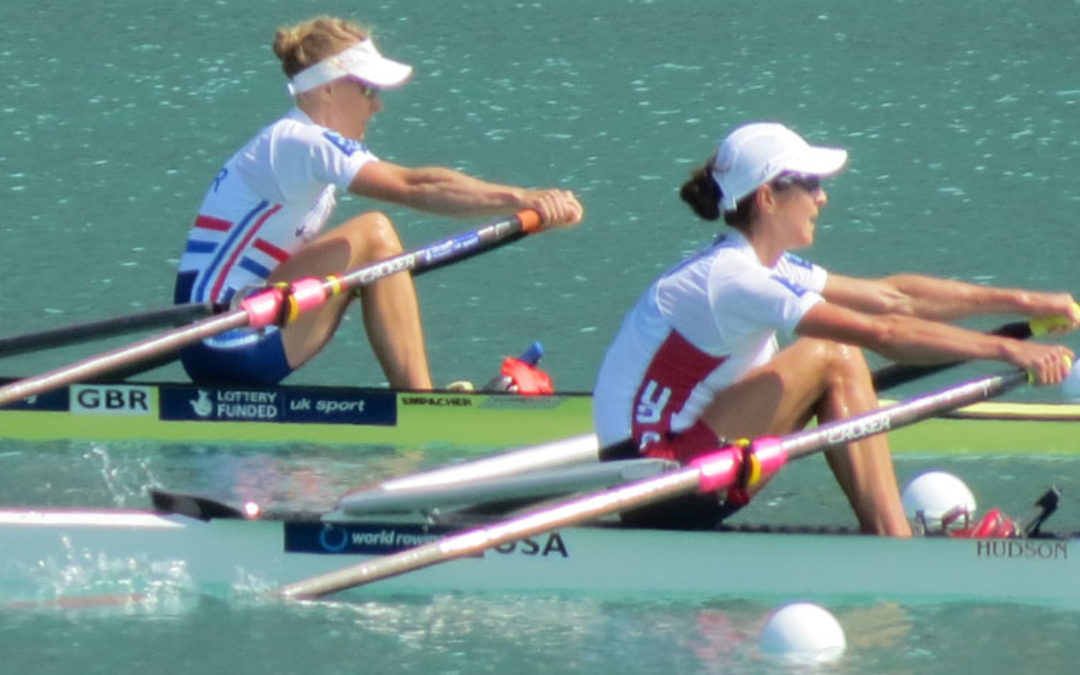Dead Legs – fatigue of the lower limbs
We received an interesting group of questions this week on Facebook:
Does a focus on using the glutes and hamstrings make you more tired though the stroke as they are bigger muscles?
Will I need to adapt to the Shoe Plate Pro QuickRelease and c) if so how long will it take?
Short answers (as we know how short our attention spans are in this social media driven world we live in)
a) No
b) A little
c) Just a few rows but deeper positive effects will continue to develop
The Longer answers:
a) The three major joints of the lower limb (ankle / knee / hip) are all involved in the coordination of force production in
the drive phase of the stroke. In terms of force production capacity, they rank: 1. Hip, 2. Knee, 3. Ankle.
In terms of fatigue resistance capacity, they rank: 1. Hip, 2. Knee, 3. Ankle, many studies have shown this with power based testing and cycling is a great example of this put to use very well, rowing follows the same pattern. You can read more here on basic leg mechanics.
In a rowing stroke pushing against a flat board with poor foot support, the ankle and joints of the foot play an early and enhanced role in the loading of the limb, which increases the loads around the knee and recruits a lot of the foot and ankle stabilizers, decreasing the potential work of the hip and knee. In this scenario the rank of force production demand is often adjusted like this: 1. Knee, 2. Ankle, 3. Hip. This is not an ideally effective pattern and the stabilizing muscles are not ideal for on/off force production-type recruitment.
By using the ShoePlate Pro QuickRelease to stabilize and load more of foot and decrease ankle ‘interference’, we not only increase the capacity for force production, as we have seen many times with our instrumented foot stretcher, but we position the hip and knee to be loaded respectively, increasing the joint fatigue resistance of the rower and efficiency.
Often it is not the crews going the fastest at the start that win races, but those who sustain their speed best during the race. Positioning our feet to help achieve this is an easy and immediate step that can be made to maintain (or increase) the race speed over the later stages where crews can start to fall apart.
Even the standard set up of the ShoePlate Pro QuickRelease on a 40 degree foot board can enable the work done by the 3 joints of the legs to be loaded better in the order of those that get tired last. If your crew gets tired last, they are in the best position to win.
b & c) We are not trying to reinvent the entire rowing stroke, merely to set the athlete in a position where they can deliver
their power most effectively and efficiently. Over the first few sessions, rowers have described the awareness of using the larger muscle groups more and a feeling of more connection. With some coaching and the fact that the muscles highlighted (hamstrings, glutes etc) are relatively fatigue resistant in phasic force production compared to the smaller groups, after a few rows, you will have found more speed and have the potential to hold it for longer.
Your legs are the most powerful asset in the rowing stroke – why not help them?
We are always happy to speak about foot force and athlete set up so if you have a question why not drop us a line at [email protected]

